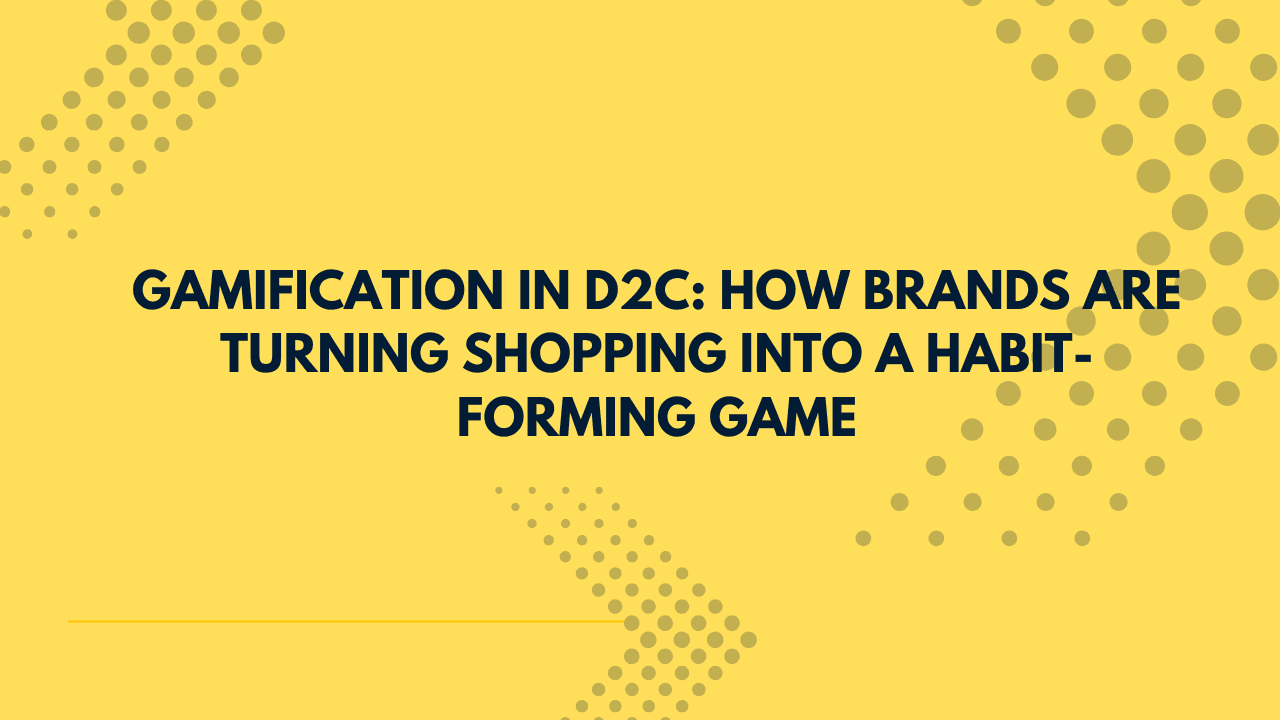Gamification in D2C: How Brands Are Turning Shopping Into a Habit-Forming Game

The Direct-to-Consumer (D2C) industry is evolving beyond price wars and flash sales. Today’s competitive edge lies in how fun and addictive the shopping journey can be. Enter gamification — a strategy that blends game mechanics with e-commerce to boost customer engagement, retention, and lifetime value.
Why Gamification Is Gaining Traction
The modern online shopper is flooded with choices. Attention spans are short, acquisition costs are climbing, and loyalty is fragile. Traditional discount codes alone are no longer enough to win customers back. Gamification solves this problem by:
- Making shopping interactive — customers are active participants rather than passive buyers.
- Creating micro-rewards — small wins that trigger dopamine, encouraging repeat visits.
- Tapping into competition and curiosity — people enjoy progressing, unlocking, and achieving.
A 2025 Kantar study shows that gamified campaigns lead to a 32% increase in repeat visits within the first month of launch.
How Brands Are Using It
Leading D2C players are experimenting with gamification in multiple ways:
- Tiered Loyalty Programs: Brands like Mamaearth and Sugar Cosmetics offer different levels (Silver, Gold, Platinum) with exclusive benefits unlocked by cumulative purchases.
- Interactive Rewards: Boat uses spin-the-wheel mechanics during sales, where customers win varying discounts or freebies.
- Progress Trackers: Lenskart displays “You’re ₹300 away from free shipping” messages, visually tracking the user’s progress toward a perk.
- Challenges & Streaks: Wakefit’s “Sleep Challenge” rewarded users who tracked healthy sleep patterns for 14 days.
- Event-Based Games: Clothing brand Bewakoof runs limited-time quiz challenges during festive seasons, offering points redeemable for purchases.
Psychology at Play
Gamification works because it blends intrinsic motivation (fun, curiosity, personal achievement) with extrinsic rewards (discounts, freebies, badges). Behavioral science calls this the variable reward system — users don’t always know what they’ll get, but the possibility of a reward keeps them engaged.
Measurable Business Outcomes
Data from Shopify Plus and industry surveys reveal:
- Engagement time on websites/apps increases by 35–40%.
- Conversion rates jump by 15–25% during gamified campaigns.
- Repeat purchase frequency improves by up to 30%.
- Brands report lower churn in subscription-based products when gamification is integrated.
Challenges for Brands
While gamification can supercharge growth, it’s not without risks:
- Overuse Fatigue: Customers might tire of repetitive games.
- Short-Term vs. Long-Term Value: Brands risk focusing too much on “fun” without strengthening actual product loyalty.
- Complexity in Execution: Custom gamification features can be expensive to develop and maintain.
What’s Next
The next wave of D2C gamification is likely to merge AI-driven personalization with real-world rewards. Imagine:
- A skincare brand issuing a “7-day glow challenge” with tailored product bundles based on a customer’s past purchases.
- A coffee brand unlocking a mystery flavor after the user tries three specific blends.
- An apparel brand introducing AR treasure hunts where customers find discount codes in virtual showrooms.
E-commerce experts believe gamification will soon become as standard as loyalty points. But its success will depend on balancing entertainment value with brand authenticity. In other words, the game can’t overshadow the product — it has to make the product experience more memorable.
In the words of Ananya Mehta, an e-commerce growth strategist, “The brands that will win the next five years are those that make shopping feel like a story you want to continue, not a transaction you want to end.”
Explore More
1. Why Your Retention Strategy Should Start Before the First Purchase
2. The Psychology Behind Gamified Loyalty and Why It Works
3. Gamification in Ecommerce Loyalty: Worth the Hype? 4. Fixing the Leaky Funnel: Retention Strategies That Work 5. Top Retention Mistakes D2C Brands Still Make in 2025